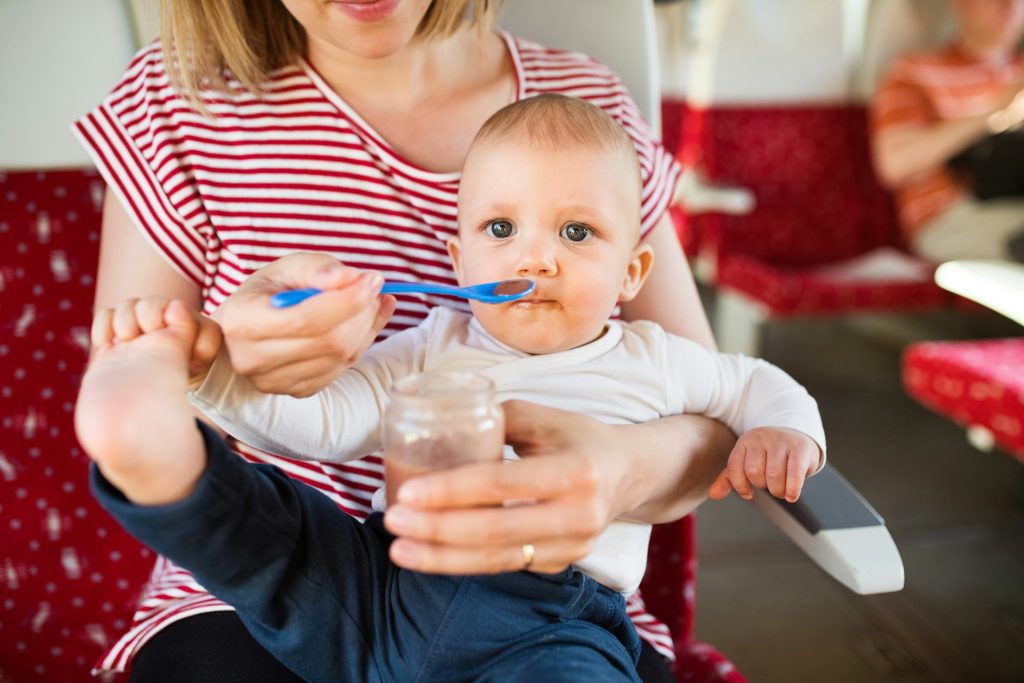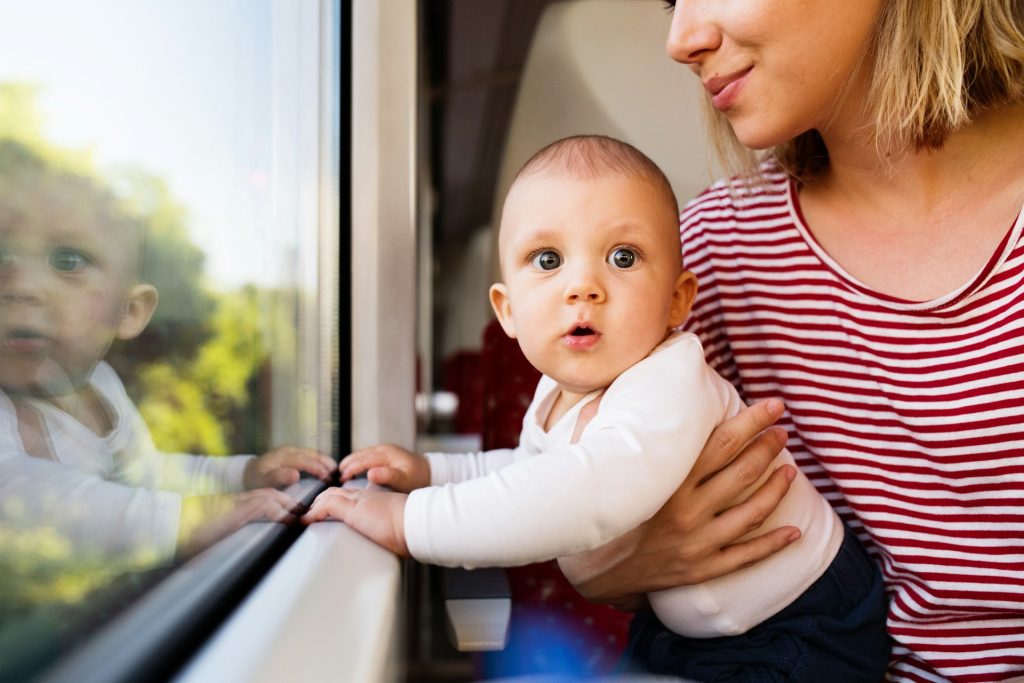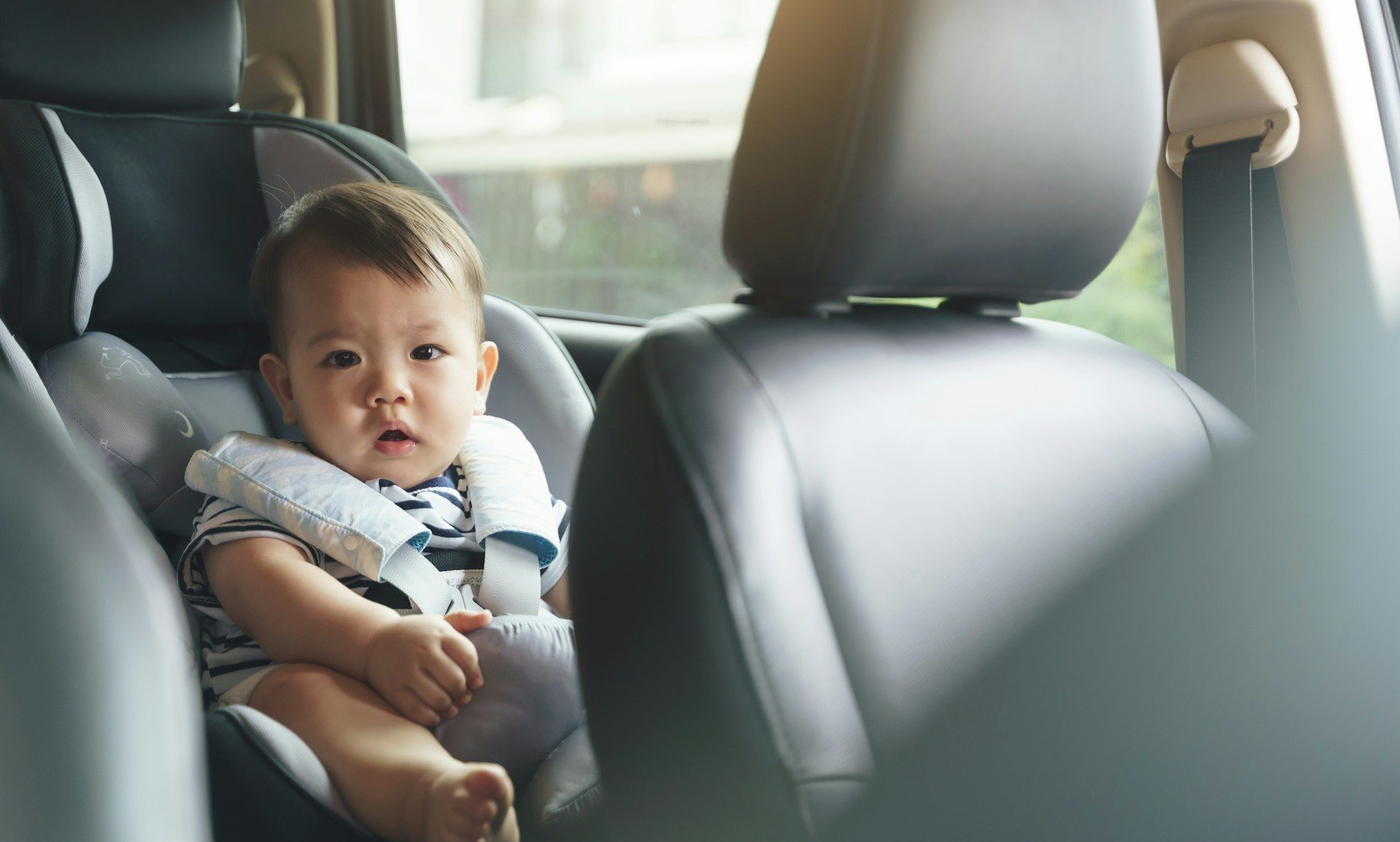Table of Contents
Traveling with young children means being prepared for anything, especially when it comes to feeding your baby. Keeping your baby’s formula at the right temperature is crucial, and a cooler bag can be a lifesaver.
For plane travel, pack enough formula for potential delays. Regulations allow you to bring more than the standard limit of liquids for medically necessary liquids, including breast milk and formula. Whether in a car seat or on a flight, these tips will help you maintain your formula-feeding routine.
For those flying with babies, bringing formula on a plane requires planning. With the right tips on traveling with baby formula, you’ll be prepared for a smooth journey.
Preparing for Your Journey: Formula Feeding Essentials
Before you leave, it’s essential to have a clear plan for formula preparation and storage. This means understanding how much formula your baby will need and organizing it efficiently. Pack everything required for smooth feeding so you can enjoy your travels knowing your baby’s needs are covered.
Choosing the Right Travel Formula
Choose a baby formula that suits your travel style and your baby’s dietary needs. Consider the availability of your preferred brand at your destination and if you’ll need to adjust your baby’s feeding routine due to travel constraints or environmental changes.
Powder vs Liquid Formula: Pros and Cons for Transport
Powder formula is lightweight and convenient for travel, but it needs clean water for mixing. The liquid formula is ready-to-feed but heavier and takes up more space. A formula dispenser can help portion powder precisely.
Packing Essential Items for Formula Feeding
Pack a formula dispenser, bottles, nipples, and a bottle warmer aside from the formula. These essentials ensure you can feed your baby anytime, anywhere, without stress.
Powder Formula Dispensers and Pre-Measured Portions
A formula dispenser is invaluable for managing pre-measured portions of formula powder. It simplifies the feeding process by ensuring you have the correct amount of formula for each feed, avoiding waste and the need for measuring under less-than-ideal conditions.
Bottle Brushes, Dish Soap, and Sterilizing Bags
Cleaning supplies are a must. Pack a bottle brush, dish soap, and sterilizing bags to clean bottles on the go. Sterilizing bags are particularly handy as they can be used in a microwave, ensuring your baby’s bottles are bacteria-free.
Accessing Clean Water: Planning for Your Destination
When traveling, especially by air, airport security will affect your access to liquids. Plan how to get clean water for formula and bottle washing. Check if your destination has drinkable tap water or if you’ll need to buy bottled water.
Air Travel With Baby Formula

Understand air travel rules for baby formula. Know the transportation security guidelines for carrying formula powder and liquids in your carry-on luggage. This ensures a smoother experience at the security checkpoint and during your flight.
Understanding TSA Regulations for Flying With Formula
The Transportation Security Administration (TSA) allows parents to bring formula-feeding supplies through airport security. Be ready to declare and separate them in zip-lock bags if requested for additional screening.
Tips for Carrying Formula Through Security
Keep your baby’s formula in your bag for easy screening. Solid formula powder is usually less scrutinized than liquids. Be ready to explain that the formula is for your child, and remember that these regulations are in place for everyone’s safety.
Formula Feeding During Flights
Consider your baby’s feeding schedule when flying. Be flexible and prepared to feed at different intervals, depending on your baby’s needs and comfort during the journey.
Preparing Bottles on Board: Managing Feeding Times
On the plane, have a bottle ready to be warmed by flight attendants or with hot water. Anticipate your baby’s hunger cues and prepare bottles in advance to avoid rush and spillage during turbulence.
On-the-Go Formula Feeding Tips
Maintaining your baby’s feeding routine while traveling requires preparation and adaptability. You can ensure your baby is well-fed and happy with the right tools and knowledge.
Keeping Formula Fresh on the Go
Keep the pre-measured formula cool in a thermally insulated bottle carrier with ice packs when you’re out exploring. This way, you have fresh formula on hand, and you can warm your baby’s bottle whenever it’s time to feed.
Thermal Bottle Carriers and Ice Packs
Use thermally insulated bottle carriers to keep formula bottles at the perfect room temperature while traveling. These carriers maintain the contents’ temperature, ensuring your baby’s feed is safe and comfortable.
Ice packs can extend the cooling effect in carriers during long journeys or in warmer climates. Always test the formula’s temperature before feeding.
Formula Feeding While Traveling
Upon arrival, continue formula feeding without delay. Do not disregard professional medical advice or postpone seeking it because of something you have read or planned. Quickly locate stores or services to restock formula and find clean, safe water. Ensure a travel-friendly formula-feeding routine to keep your baby happy and healthy.
Finding Baby-Friendly Facilities and Resources
Discovering baby-friendly amenities at your destination can ease the formula-feeding process. Look for accommodations with kitchenettes for washing and sterilizing bottles. Many destinations have family rooms or nursing areas for feeding. Staying in a private rental or villa will give you more options. With research, you can find restaurants and attractions accommodating families with infants, making things easier.
Listening to the Community: Parental Insights on Traveling With Formula
Traveling with a baby requires extra planning, especially for formula feeding. Listening to other parents who have been on similar journeys can be invaluable. They provide real-life insights, from the best travel gear to managing feeding schedules on the go. Engaging with these communities can offer support, reassurance, and practical tips to make your travels with a baby smoother.
Shared Experiences and Tips from Parents
Parents who have mastered formula feeding while traveling often share their wisdom online. They suggest products that make travel easier or creative solutions to common problems. Learning from these experiences can help you prepare and navigate the unexpected, ensuring a more relaxed trip for you and your baby.
Practical Tips for Every Scenario
Parents traveling with babies must prepare for various scenarios, from flight delays to lack of facilities. Having a plan for keeping formula at room temperature or finding quick ways to warm bottles can make a significant difference. Understanding the nuances of bottle feeding in different settings, like on a plane with a cooperative flight crew, can reduce stress and ensure your baby remains content throughout the journey.
Formula Feeding at Daycare or With a Sitter While Traveling
When leaving your baby with a daycare or sitter while traveling, clear communication is essential. Provide detailed instructions on the feeding routine, including amounts and schedules. Ensure they understand how to prepare the formula and have all the necessary supplies. This will maintain consistency in your baby’s diet and give you peace of mind.
Communicating Your Baby’s Needs and Routine
Share your baby’s formula-feeding routine with caregivers when traveling. Give written instructions on preparation and feeding and discuss hunger and fullness cues.
Demonstrate the routine before you leave to ensure the caregiver is comfortable. This prevents feeding mishaps and keeps your baby on a familiar schedule.
Calculating Baby Formula Needs on a Trip
When planning your trip, calculate the amount of formula your baby will need. Plan for quantities greater than 3.4 ounces, as liquid formula is allowed in carry-on baggage in reasonable amounts. Prepared formula, breast milk, and infant juice are exempt from the liquids rule and can be carried in larger quantities. Inform TSA agents at security screening, as these items may need additional checks.
Adjusting Feeding Schedules for Time Zone Changes
Traveling across time zones can disrupt your baby’s feeding schedule. To help your baby adjust, shift feeding times gradually before departure. At your destination, try to feed at regular intervals according to the local time. Staying consistent with the local schedule will help your baby adapt quickly.
Overcoming Common Challenges and Enjoying Your Trip

Adapting to travel with an infant and managing formula needs can be challenging but manageable. Ensure your baby stays well-fed by anticipating obstacles and having backup plans. This will help you enjoy your journey and create lasting memories.
Adapting to On-the-Road Realities
Staying flexible and adapting to changes is key when traveling with a baby. Unexpected events can alter your plans, but having a go-with-the-flow attitude will help you manage. Keep pre-measured formulas for easy preparation and ask for assistance or accommodations when needed. By embracing the realities of travel, you’ll find joy in the journey and the special moments with your baby.
The Bottom Line: Successful Formula Feeding While Traveling
Traveling with your baby and maintaining a formula-feeding schedule can be stress-free with proper planning. Carry formula on the plane, use an insulated cooler to keep it at the right temperature, and notify the TSA officer about your baby’s food at security checks. When packing your diaper bag, prioritize accessibility and hygiene for formula feeding on the go. A separate compartment for feeding supplies ensures quick bottle warming when needed. With these tips, you’ll be well-equipped to provide your baby’s feeding needs and enjoy your trip together.




